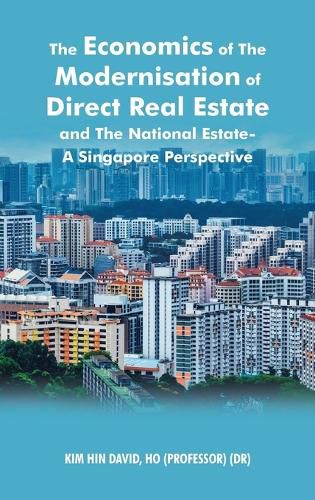Readings Newsletter
Become a Readings Member to make your shopping experience even easier.
Sign in or sign up for free!
You’re not far away from qualifying for FREE standard shipping within Australia
You’ve qualified for FREE standard shipping within Australia
The cart is loading…






This title is printed to order. This book may have been self-published. If so, we cannot guarantee the quality of the content. In the main most books will have gone through the editing process however some may not. We therefore suggest that you be aware of this before ordering this book. If in doubt check either the author or publisher’s details as we are unable to accept any returns unless they are faulty. Please contact us if you have any questions.
The Economics of The Modernisation of Direct Real Estate and The National Estate - A Singapore Perspective Chapter 1 takes a close look the vector auto regression (VAR) model, offering a dynamic system of solely direct real estate variables, for international direct real estate investors and policy makers, to enable their decision-making. Chapter 2 examines the association of residential price and aggregate consumption. A cross-spectra analysis is helps to so validate, because of its model-free characteristics Chapter 3 is concerned with the underlying housing market dynamics and housing price time-series variation, via the Singapore (SG) generalized dynamic factor model (GDFM). Chapter 4 is concerned with the in-depth market analysis and empirical analysis of the structural behavior of the important SG private housing sector. Chapter 5 acknowledges that an in-depth sector analysis and an empirical analysis are imperative to better understand the structural behavior of the SG office sector. Chapter 6 is concerned with the Main Upgrading Programme (MUP), a highly targeted subsidized Housing Development Board (HDB) policy, since the 1990s. Chapter 7 recognizes the ‘National Estate’, denoting SG’s built environment, due to physical planning, integrated urban design, and the direct influence of the SG government in providing physical infrastructure via government ministries, statutory boards and public authorities. Chapter 8 offers the book’s conclusion.
$9.00 standard shipping within Australia
FREE standard shipping within Australia for orders over $100.00
Express & International shipping calculated at checkout
This title is printed to order. This book may have been self-published. If so, we cannot guarantee the quality of the content. In the main most books will have gone through the editing process however some may not. We therefore suggest that you be aware of this before ordering this book. If in doubt check either the author or publisher’s details as we are unable to accept any returns unless they are faulty. Please contact us if you have any questions.
The Economics of The Modernisation of Direct Real Estate and The National Estate - A Singapore Perspective Chapter 1 takes a close look the vector auto regression (VAR) model, offering a dynamic system of solely direct real estate variables, for international direct real estate investors and policy makers, to enable their decision-making. Chapter 2 examines the association of residential price and aggregate consumption. A cross-spectra analysis is helps to so validate, because of its model-free characteristics Chapter 3 is concerned with the underlying housing market dynamics and housing price time-series variation, via the Singapore (SG) generalized dynamic factor model (GDFM). Chapter 4 is concerned with the in-depth market analysis and empirical analysis of the structural behavior of the important SG private housing sector. Chapter 5 acknowledges that an in-depth sector analysis and an empirical analysis are imperative to better understand the structural behavior of the SG office sector. Chapter 6 is concerned with the Main Upgrading Programme (MUP), a highly targeted subsidized Housing Development Board (HDB) policy, since the 1990s. Chapter 7 recognizes the ‘National Estate’, denoting SG’s built environment, due to physical planning, integrated urban design, and the direct influence of the SG government in providing physical infrastructure via government ministries, statutory boards and public authorities. Chapter 8 offers the book’s conclusion.